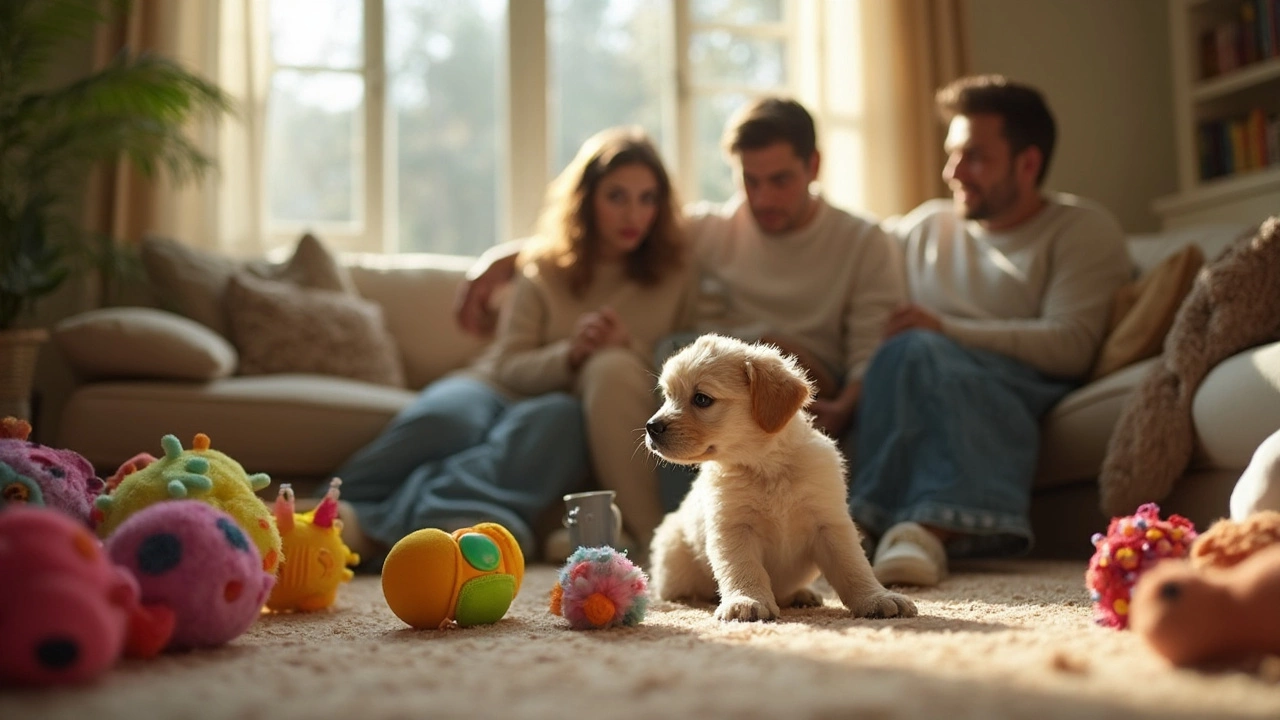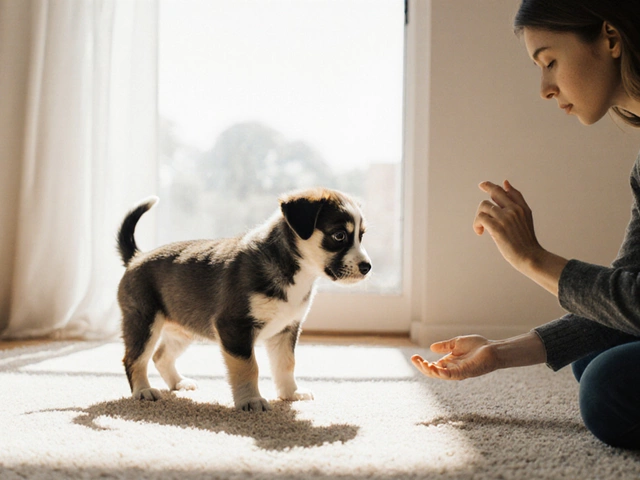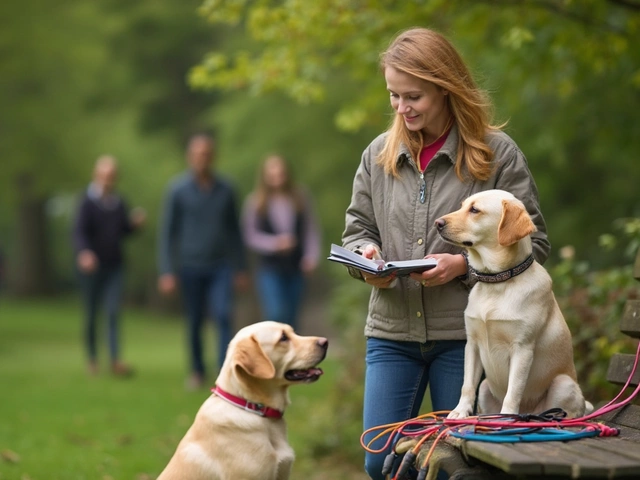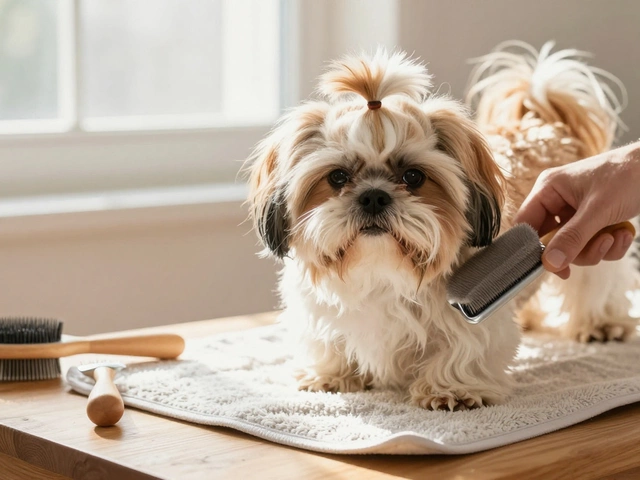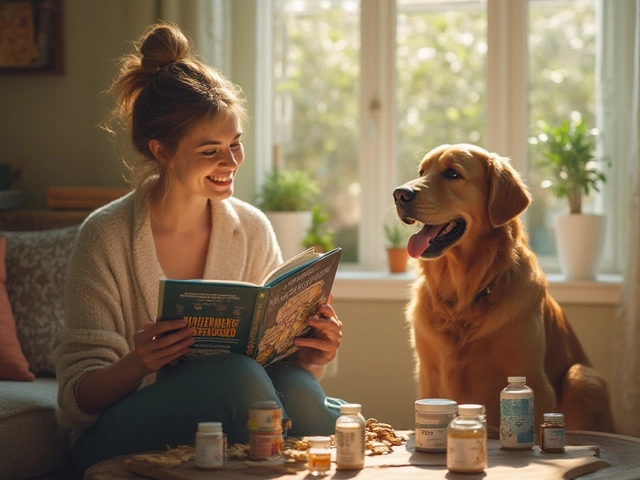The first days with a new puppy feel like a mix of chaos, excitement, and total confusion. That’s where the Rule of 3 comes in—three days, three weeks, three months—each stage brings its own surprises. Most new owners focus on potty training and sleep, but toys are the real MVPs for helping your puppy settle in and avoid disaster (like gnawed furniture or chewed up sneakers).
Here’s what a lot of people miss: Puppies use toys to burn off nervous energy, explore their new world, and distract themselves when they’d otherwise be getting into stuff they shouldn’t. So, getting the right toys in play from day one isn’t just a perk—it saves your sanity.
- Breaking Down the Rule of 3 for Puppies
- Why Toys Matter in the Early Days
- Choosing Safe and Engaging Toys
- Building Good Habits with Toys
Breaking Down the Rule of 3 for Puppies
The Rule of 3 is basically a cheat sheet for what your pup goes through as it gets used to its new home. Here’s how it breaks down: the first 3 days, 3 weeks, and 3 months. Each stage pushes you and your puppy through a different mix of emotions, challenges, and learning curves.
During those first three days, your puppy is in survival mode. Everything is new—people, smells, sounds, even the toys. Don’t worry if your puppy seems shy, scared, or isn’t eating right away. Most experts agree that it’s totally normal. You want to stick to a simple routine, use calming toys like soft plushes or slow-dispensing treat toys, and let the puppy rest a lot.
- 3 Days: Allow time for exploring at their own pace, no pressure.
- Offer a few different toys but don’t overwhelm—about two or three is ideal for now.
- Keep things quiet, gentle, and predictable.
Next, after a week or so, you hit the three-week mark. The puppy starts feeling a bit more at home, shows its real personality, and finds favorite toys. Now’s the time to start rotating toys to keep things fresh and teach what’s okay to chew (and what’s definitely not). Interactive play with you—like tug or fetch—helps build trust, not just burn energy.
- 3 Weeks: Increase playtime but keep it short and positive.
- Switch out a toy every few days so your puppy doesn’t get bored.
- Start using toys to teach simple rules, like "drop it" or "leave it."
At three months, your puppy is part of the family—but boundaries are still a work in progress. Teething is a big deal at this age, so tough chew toys are a must. This stage is perfect for reinforcing routines: using toys as positive distractions during training, crate time, or even when you leave the house for a bit.
- 3 Months: Have a mix of chew-proof and puzzle toys around for teething and mental play.
- Work toys into daily routines to reduce stress and curb destructive habits.
- Keep challenging your puppy with new types of play to build confidence and focus.
The whole point of the rule of 3 is setting expectations for both you and your puppy, so you both get through the tough parts and enjoy the fun ones. Stick to it, and you’ll watch your puppy settle in, get comfy, and form solid habits around the right toys.
Why Toys Matter in the Early Days
Most people think toys are just for fun, but when you bring a new puppy home, toys are actually doing a lot of the heavy lifting. In those first three days, your puppy is pretty freaked out—everything smells, looks, and sounds different. Toys help puppies cope by giving them a safe way to chew, tug, and explore their new digs without causing trouble.
Toys are a lifesaver when it comes to redirecting your puppy’s bitey, chew-everything instincts. Puppies lose their baby teeth between 12 and 24 weeks, and the discomfort gets real. Good chew toys relieve sore gums and keep those little jaws off your fingers and furniture. Studies show puppies given the right toys chew and bite less on stuff they shouldn't.
There’s a lot going on inside a puppy’s brain in the first weeks. Play with toys helps kickstart brain development, coordination, and even teaches a bit of patience. Puzzle toys and treat-dispensing toys keep them busy for longer stretches—and, bonus, reduce whining and destructive behavior.
| Puppy Need | How Toys Help |
|---|---|
| Reduce anxiety | Chew toys act as comfort objects |
| Limit destructive chewing | Redirects focus to safe items |
| Develop mental skills | Puzzle toys challenge their brains |
| Positive playtime | Tug and fetch build bonds |
In those first days, try a variety: soft plush for comfort, rubber chews for teething, and simple food puzzles for short bursts of distraction. Clean up the toys every few days—they get gross fast. And always keep an eye out for worn-out or broken toys, since puppies will try to swallow pretty much anything. The right puppy toys early on make everything—from teething to bonding—a lot smoother for both you and your new buddy.
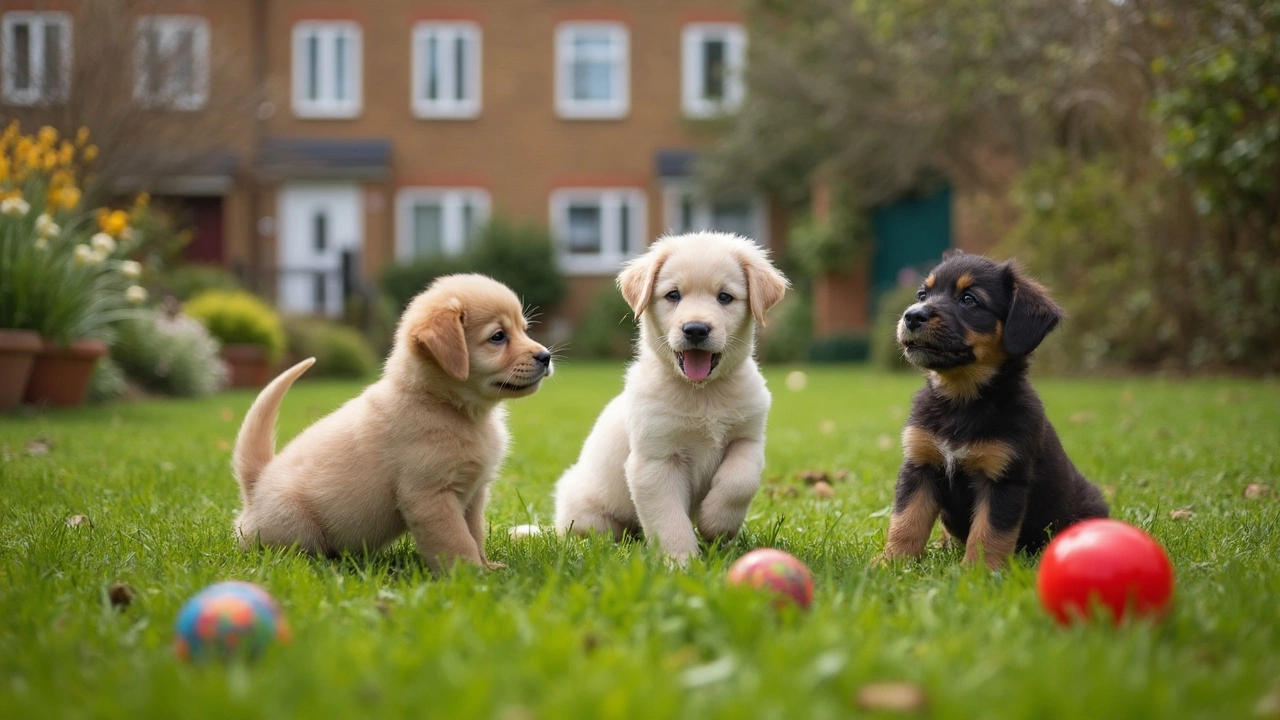
Choosing Safe and Engaging Toys
Puppies chew on everything—it’s in their DNA. But not every toy on the shelf is made equal. Some are great for little jaws and sharp teeth, while others can break, splinter, or even cause choking if you're not careful. The most important thing when picking toys for your new pup is safety. Don’t just grab anything cute or cheap.
Stick to toys made for puppies. Look for labels that say “puppy” or “teething,” and avoid stuff with small parts, loose strings, or anything that can fit in their mouth whole. Rubber toys like KONGs, soft rope toys, and certain plush toys (that are labeled for tough play) are tried-and-true choices. Hard plastic bones? Skip those, especially for teething puppies—too much risk for a broken tooth.
Fun fact: The rule of 3 doesn’t just help you manage expectations about your puppy’s adjustment to their new home; it also helps you rotate their toys. Always have at least three kinds of toys: something to chew, something to tug, and something to chase or fetch. Rotating a few toys in and out each week keeps things fresh and stops your puppy from getting bored. When puppies get bored, destructive chewing goes through the roof.
- Chew toys: Good for teething. Rubber rings, frozen washcloths, or textured toys work well.
- Tug toys: Ropes are classics, but make sure they don’t come apart easily.
- Fetch toys: Tennis balls or small, soft balls are perfect—as long as your puppy can’t swallow them.
According to the American Kennel Club, 67% of puppy owners reported fewer chewing accidents when they rotated a mix of safe toys regularly. Puppies are more likely to stick with their toys (and leave your phone charger alone) if they get bored less often.
| Toy Type | Best Use | What to Avoid |
|---|---|---|
| Chew Toys | Teething, anxiety | Toys that can break into small pieces |
| Tug Toys | Bonding, energy burn | Loose threads, falling apart easily |
| Fetch Toys | Exercise, play | Items small enough to choke on |
It’s tempting to spoil your new friend with a mountain of toys, but always check for tears, cracks, or worn-out spots. If it’s looking rough, toss it out. No toy is worth a vet trip.
Building Good Habits with Toys
Puppies aren’t born knowing what’s okay to chew or play with, so they need a little coaching from day one. If your goal is to have a happy pup (and not end up with half-eaten shoes), you’ve got to start building the right habits early. Here’s how you can use toys as your secret weapon.
The first thing to nail down? Consistency. Always encourage your pup to pick their toys instead of random household stuff. If you catch them chewing something off-limits, quietly swap it out with a toy. Skip the scolding—positive redirection works way better for puppies. Science backs this up: puppies who get redirected with toys are much less likely to develop destructive behaviors than those who get scolded or ignored.
- Keep toys in plain sight—baskets on the floor work great.
- Rotate toys every few days to keep your puppy interested and prevent boredom.
- Use toys for short play sessions (about 5–10 minutes) to burn energy and reinforce behavior you want.
- Make sure to reward your puppy (even just with praise) when they go for their toys instead of your stuff.
Interactive toys, like treat puzzles or stuffable rubber toys, do double duty. They keep puppies busy and mentally challenged, which can reduce anxiety and keep them from looking for trouble. According to a 2023 survey by the American Pet Products Association, nearly 65% of new puppy owners said puzzle toys helped limit chewing on inappropriate objects during the puppy’s first month home.
| Toy Type | Main Benefit | Best For |
|---|---|---|
| Chew toys | Soothes teething, saves shoes | 3–12 week-old puppies |
| Puzzle toys | Keeps brain busy, reduces boredom | All ages, especially smart breeds |
| Plush toys | Comfort, light play | Very young or anxious pups |
Don’t overload your puppy with every toy at once. Dogs get overwhelmed, too. Stick to a small selection—three to five toys is a good starting point. Switch them out regularly to keep things fresh.
The bottom line? The rule of 3 doesn’t just help with potty training or sleep. It’s the backbone for turning toys into tools that teach your puppy what’s theirs, what’s safe, and what habits last a lifetime.

